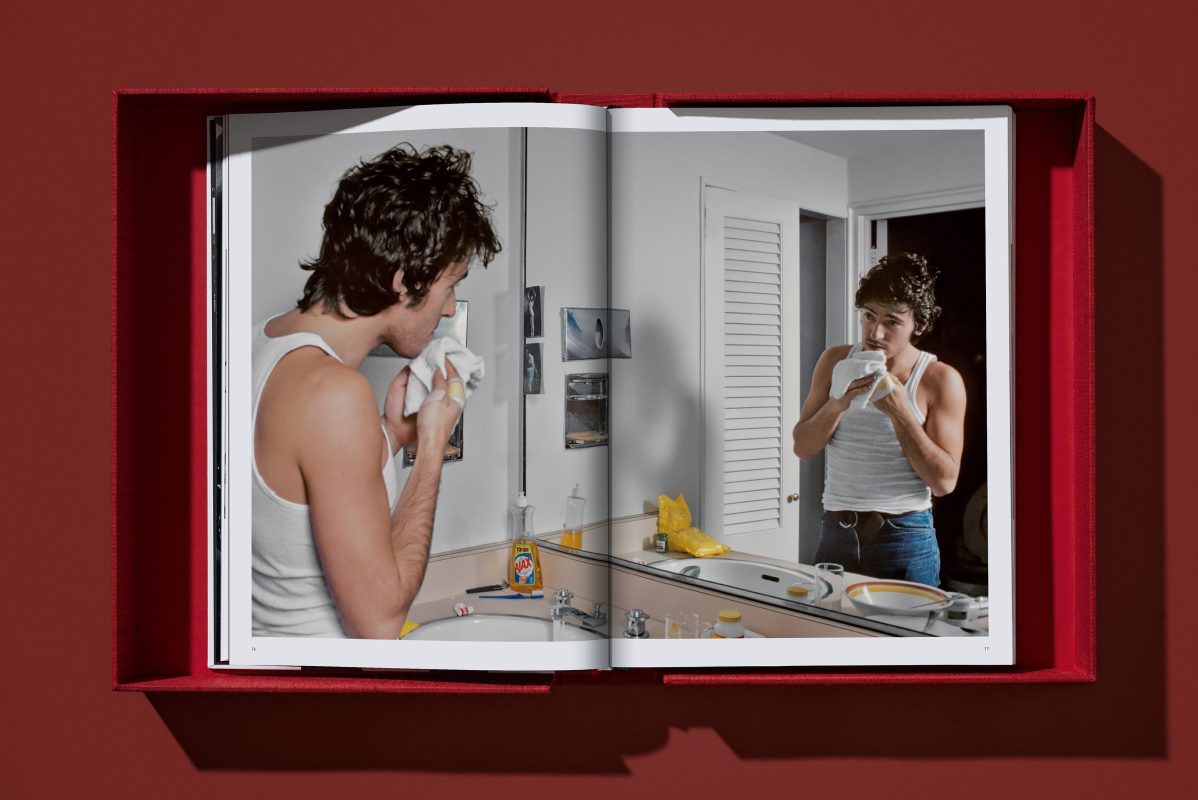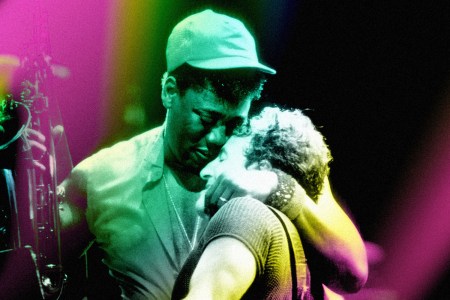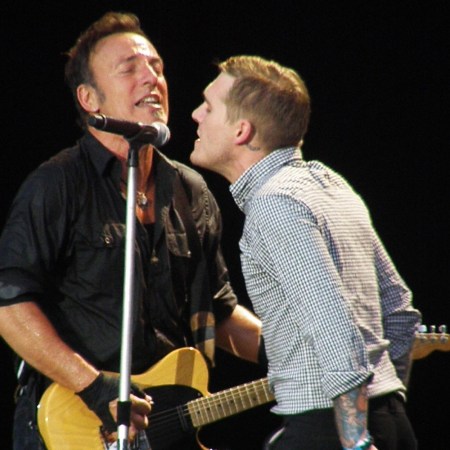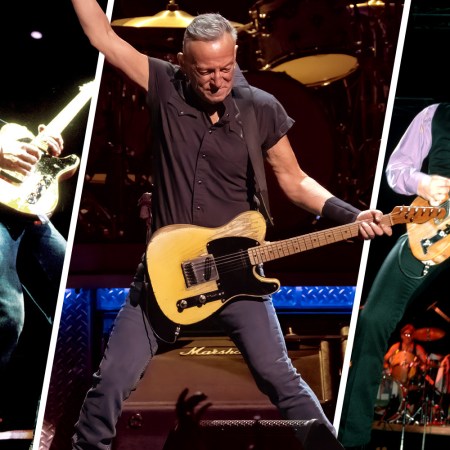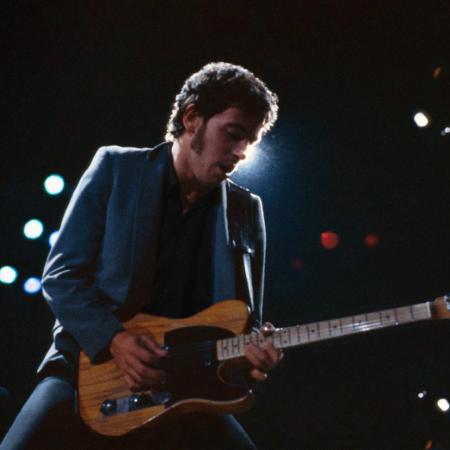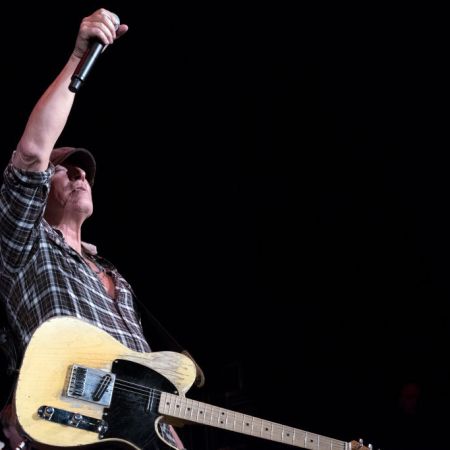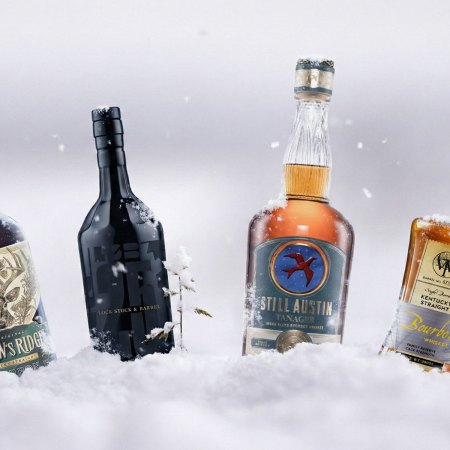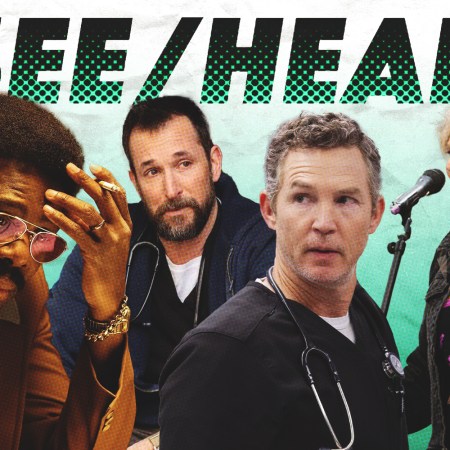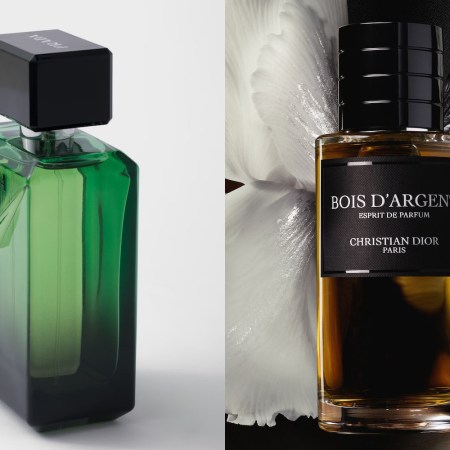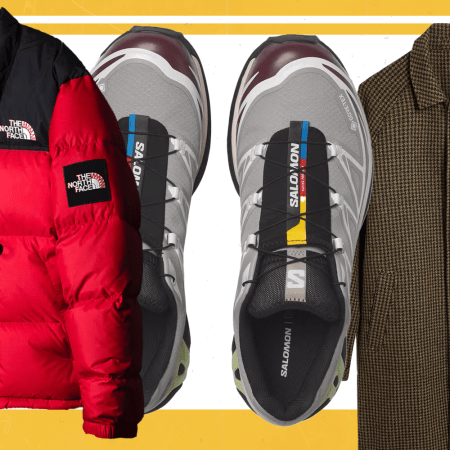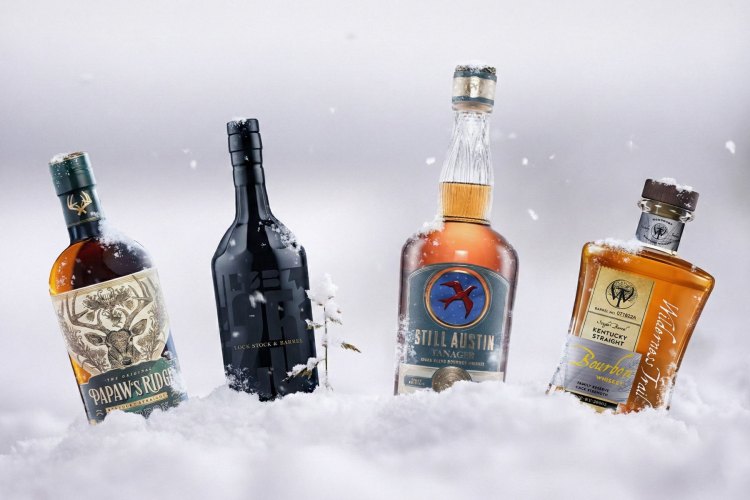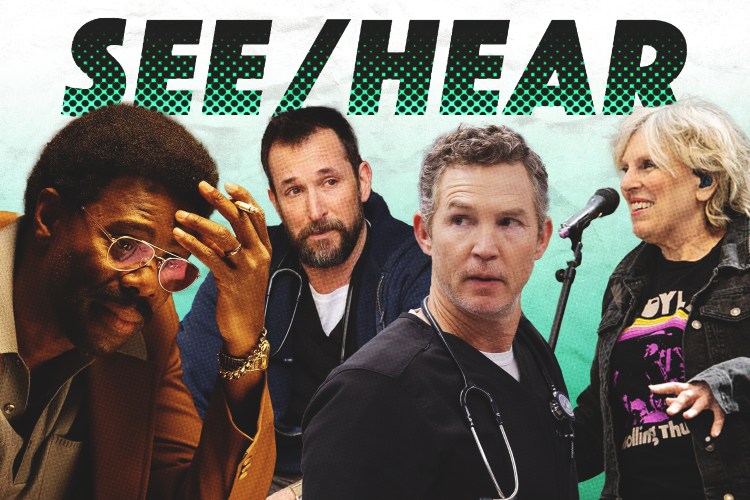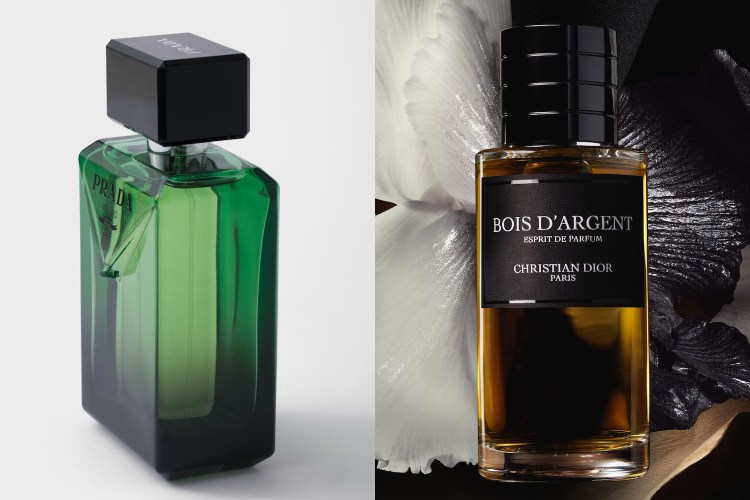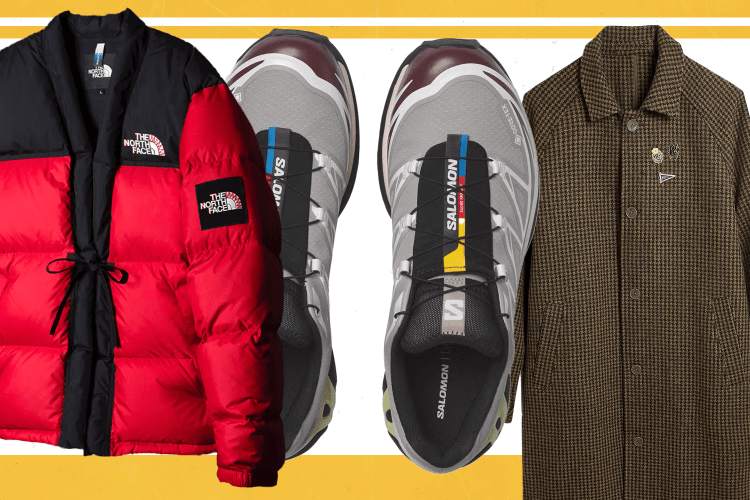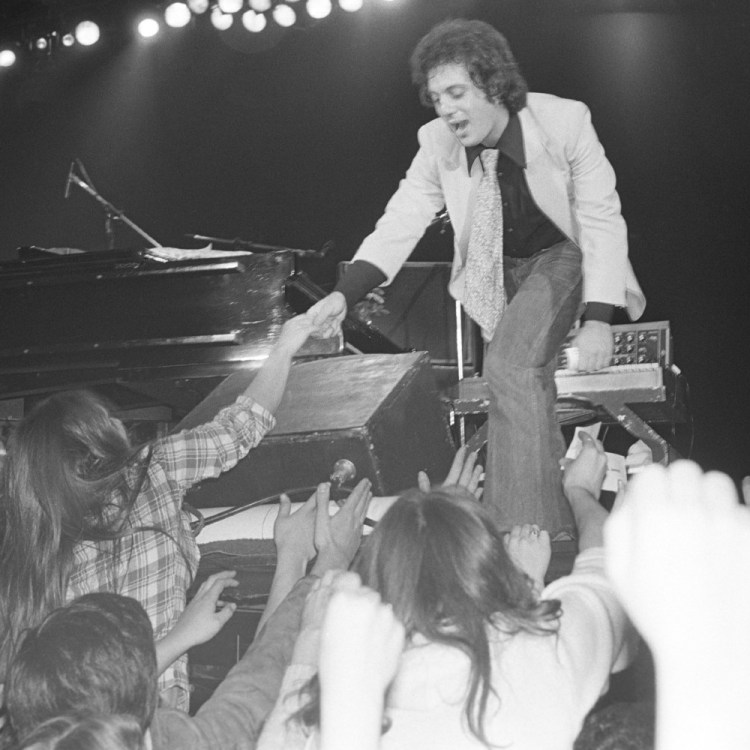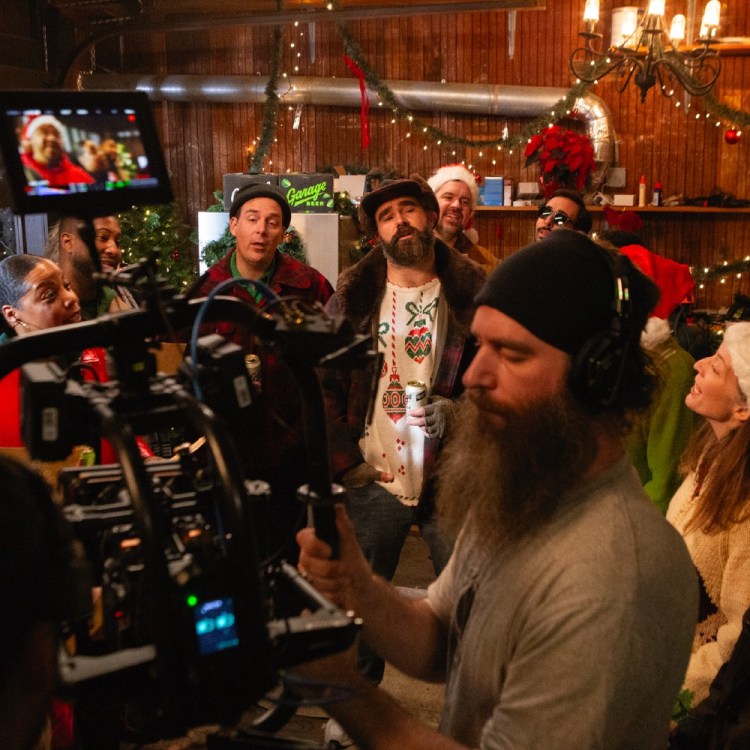He’s been one of the most beloved live performers of all time for so long now that it’s difficult to remember there was a time when Bruce Springsteen wasn’t selling out arenas across the country. In 1978, he was fresh off the release of Darkness on the Edge of Town, his fourth album and the first since the massive, breakthrough success of Born to Run. He had something to prove — that he wasn’t a one-hit wonder, that he and the E Street Band could transfix an audience, regardless of how big or how small it happened to be.
Ever the perfectionist, Springsteen spent much of this era meticulously sound-checking (sometimes for as long as three hours) before each gig, listening to the recordings of each show at the end of the night to figure out what to improve, and yes, occasionally punching a wall. Legendary rock photographer Lynn Goldsmith was there to capture it all, from the rehearsals and recording sessions for Darkness to the thrilling live shows and behind-the-scenes backstage moments on tour. Now, decades later, she’s compiled those never-before-seen images into a fascinating new photo book, Bruce Springsteen & the E Street Band: Darkness on the Edge of Town. As Springsteen himself writes in the book’s foreword, “These photos remain a record of a time when I truly played for my life, night after night.”
On Dec. 4, Goldsmith will appear in conversation with photographer Pam Springsteen (who also happens to be Bruce’s sister) at Fotografiska in New York City. But first, we caught up with her to discuss the inspiration behind the book, her memories of touring with The Boss and more.
InsideHook: Tell me a bit how this book came to be and what made you decide to revisit all these images in this particular Springsteen era.
Lynn Goldsmith: My last — well, it’s not my last book now, it’s the book before my last book, which was a Taschen book called Patti Smith. And, normally with any publisher, when you do a book, they have the rights for whatever book you’d like to do next. And so I asked my editor at Taschen what book he thought they wanted after the Patti book. And he said he wanted a book on the ’80s, and I said, “The ’80s? I hate the ’80s. I don’t wanna do the ’80s.” [laughs] And he said, “Well, we would really like that. Could you just put something together?” And as I put it together and went through all my pictures, I realized what an amazing decade it was. And I just had this attitude about it, which then I thought most of the people of my generation have, you just thought of it as bad fashion, bad hair, bad music. And that was all wrong. The ’80s was the most incredible musical decade if you really look at it. And because I photograph so many different kinds of artists — rap became popular in the ’80s, jazz was popular with both Miles Davis and Herbie Hancock. Anyway, to make a long story short, I really fell in love with it as I was working on it. And I gave it to him. And he said, “You know what? We decided here at Taschen that we only wanna do single subject matter of an artist.”
I said, “This was your idea, and now I’m hooked on it.” [laughs] So I said, “If it’s fine with you, I’m giving it to Rizzoli.” So that was my book, Music in the ’80s, that came out last October, actually November. And so Taschen said, “What we’d really like is a book on Bruce Springsteen.” So I’m asked for that, oftentimes from different publishers, and I have not been interested because I’ve done some books on Bruce, even if they were a long time ago. And I have a wealth of imagery, even outside of the music genre, whether it’s film or whether it’s the streets of New York. I could do books on a lot of different subject matter. And so I thought, “You know what? I would really like to do a beautiful book, and the highest quality books are Taschen.” So I thought, “You know what? If Bruce wants to do it, I’ll do it.” So I got in touch with Bruce and he said, yeah, he’d like me to do that. So that’s what I did.

How do you think that the music of Darkness on the Edge of Town impacted the photos that you took to promote it? Did you have a specific vision that you were going for when you were taking those portraits to promote the record?
I did in some ways, which was only because Bruce wanted the tone of this record to be very serious. And Bruce had at that time, for the most part, a male following. Girls were not rushing the stage. And he never really played up his sexiness, and I am someone who wants to bring out in any subject, just like I tried to make Patti Smith, I wanted people to see more of the feminine side of her than what Robert Mapplethorpe has shown. So that’s part of the reason I like working the way that I did, with artists in the ’70s, ’80s and early ’90s, where you had more control over what they were going to look like. And so many of my images,— like, there’s pictures in the book of Bruce in this black tee, you know?And, I as a girl, think that’s really sexy. That’s not the kind of thing Bruce would have posed in so to speak ’cause he wasn’t that kind of poser, you know?
And I felt like he would do that with me. He wasn’t gonna do that with Eric Meola. Eric did Born to Run, and he wasn’t gonna do that with Frank [Stefanko, who shot the cover of Darkness on the Edge of Town]. So that’s one of the things that I could offer was keeping him as the Bruce that is thought of as having integrity and being authentic, but yet trying to show that he’s sexy. I think over the past decades, he’s proven that he’s sexy, and there’s plenty of females who like him as well as males. But in the beginning, it was a very male-dominated audience.
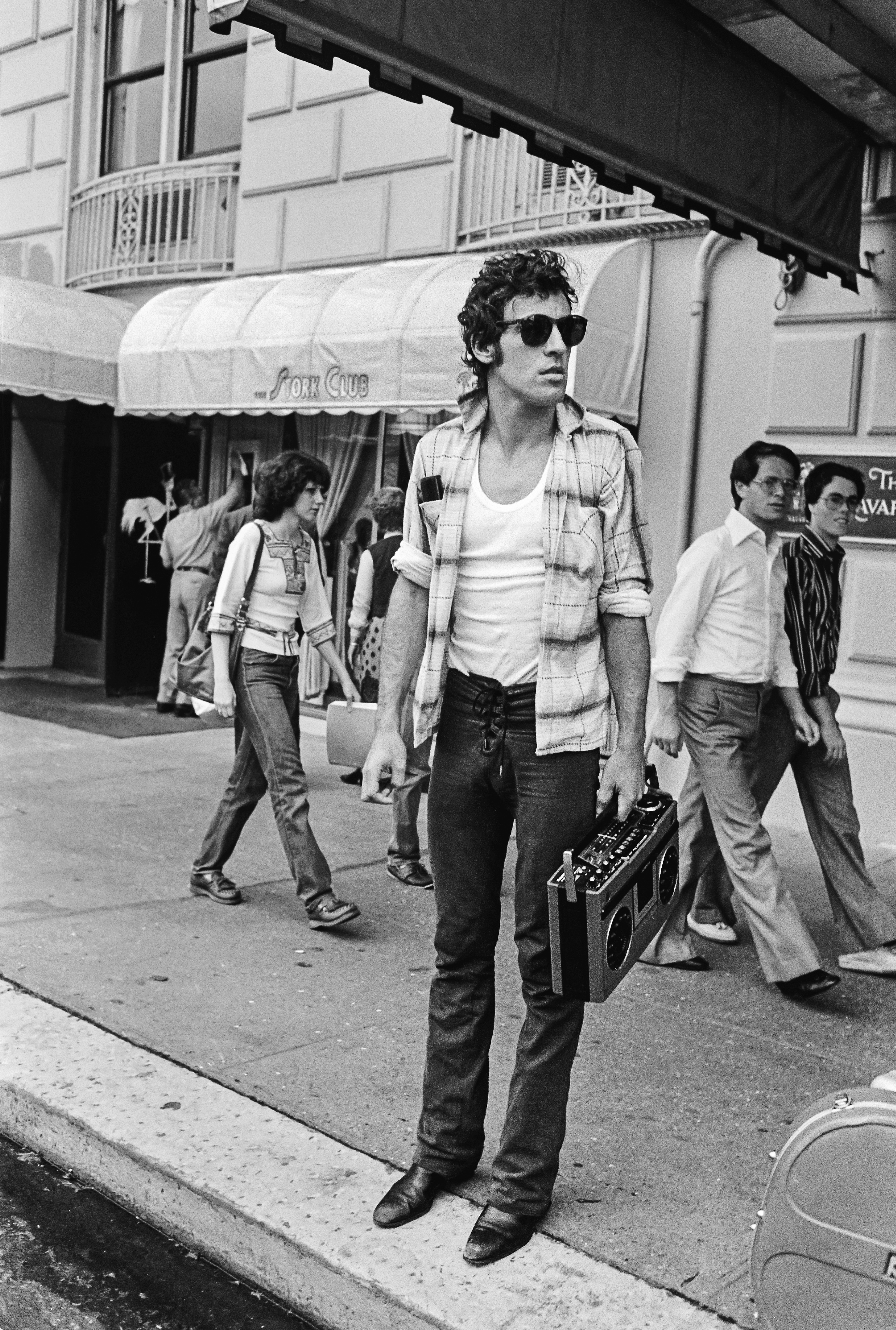
Well, sort of related to that, in the intro to the book you write about Bruce wearing your leather jacket and how that leather jacket wound up in the Rock and Roll Hall of Fame. What can you tell me about shooting those photos and how that jacket wound up on him?
Well, you see, that’s exactly kind of hearkening back to what I just told you, right? That jacket was mine. And I just thought, he wore this longer — there’s other pictures in the book of the leather jacket he always wore, which like had pockets. He wore the more like car coat leather jacket, right? And Bruce was not one to wear studs, that wasn’t his cup of tea, but I wanted him to be like a sexy rock and roller, and we’re about the same size. So I put my jacket on him. I had that jacket since college, when the manager of my band Walking Wounded gave it to me. So I’d been wearing it for years. And he put it on, he did it. And he gave me as much as he could, but he finally just said, “I gotta take this off.” [laughs]
There are so many great photos of Bruce and Clarence together in this book, and you can really get a sense of the love that they had for each other. And I especially love the series of photos where they’re splashing around in a fountain. What do you remember about that day, shooting those photos?
I’m not sure where we were. I didn’t write things down. I think it was in Texas. And they had just finished doing a show. Now, mind you, when they do a show, the show is about four hours long. And then prior to that, there was generally like a three-hour sound check. Normally a band does like a 20-minute soundcheck, but Bruce was very much a perfectionist and wanted wherever you sat in the audience to not only have a good view, but hear it well. So he would walk around, and it shows that in the book, all over the venue while the band played to make sure that he could hear it the way he thought it should be heard. So it was a long day.
And then afterwards when you got on the bus, because he would have his sound guy tape the shows, Bruce would listen to the shows to improve upon the next one. And we would stop along the way, to get something to eat, pick up food somewhere. And, that was just a stop that we made. And there was a fountain there, and I said, “Quick, get in the fountain.” [laughs] “This’ll make a good picture.” And, I mean, not just them, but other artists, like the B-52’s, if I say get in the water, by that time, they know that when I make a picture, it’s worth it to them. They trust me. They shouldn’t, but they do. [laughs] I only say they shouldn’t because one time somebody got electrocuted, but, thank god Bruce and Clarence didn’t. And so they got in the fountain.
Bruce Springsteen Is an Icon of Non-Toxic Masculinity. Why Do Men Keep Misinterpreting Him?
Despite his macho looks, The Boss has long subverted our expectations for male rock starsThat’s great.
Yeah. Hopefully making pictures is fun, not torture. Most people, most artists really don’t wanna have their picture taken, because I think they’ve worked with so many people that — many photographers don’t give direction and don’t really communicate, and the person in front of the camera just feels kinda lost out there, whether it’s in front of a seamless or in a location. And so, when I work with people, not only do I give direction, but I am talking, “Oh, that’s great. Oh, blah, blah, blah, blah.” You know? “Yeah, yeah. Yeah.” So I think it’s fun for them, and they’re more open to it when I ask. The fact that I asked after an exhausting day shows that they really trusted me.
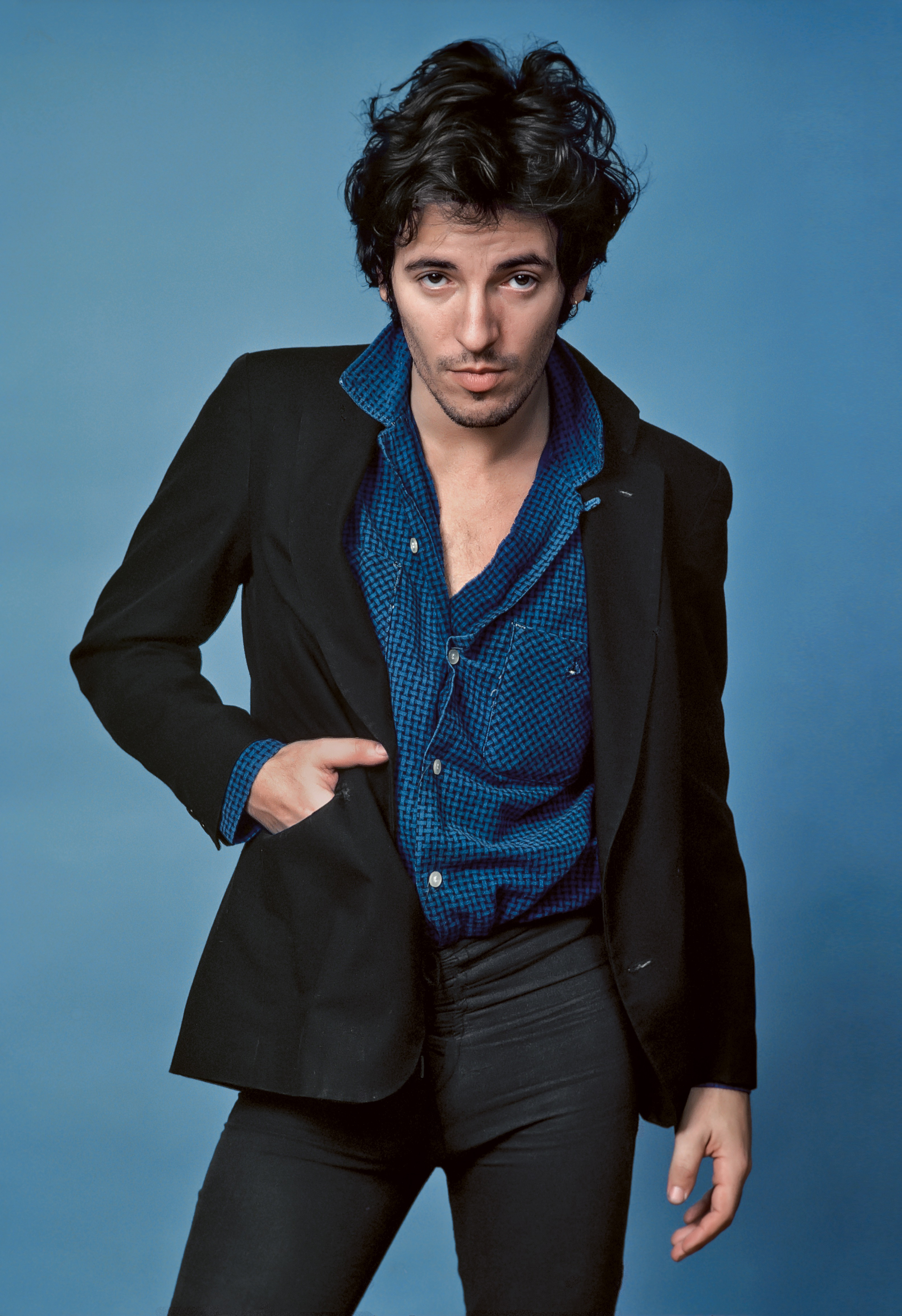
Well, another one of my favorite images in the book is the one of Bruce standing in front of a bunch of Saturday Night Fever posters, and there’s that John Travolta quote about Scientology in the background. How did that one come to be?
Oh, we were somewhere, I don’t know where we were, Boston or somewhere. And either we’re walking to the venue or near the venue. And I mean, I’m a photojournalist as well as a portrait artist. So it’s like, “Oh, come, there’s a shot.”[laughs] “Hello! Stand in front of that.” [laughs] I mean, it’s not like it takes genius. I was making pictures, in hopes to get him as much press as I could. And when you try to get someone press, you present what’s called a set in those days. Anyway, you present a set of pictures. So you give them a studio shot, which hopefully they’ll use on the cover. But if they get a set of pictures already done that are good pictures with a cover, and then other pictures, concert, walking down the street doing this and that, then you have a story. So I did that with Bruce, but I did it with a lot of artists. I did it when I co-managed Grand Funk. That was a good learning experience to understand years before, to understand that magazines, oftentimes, if you gave them what already existed and they didn’t have to go out and try and make it happen, that then you got the coverage.
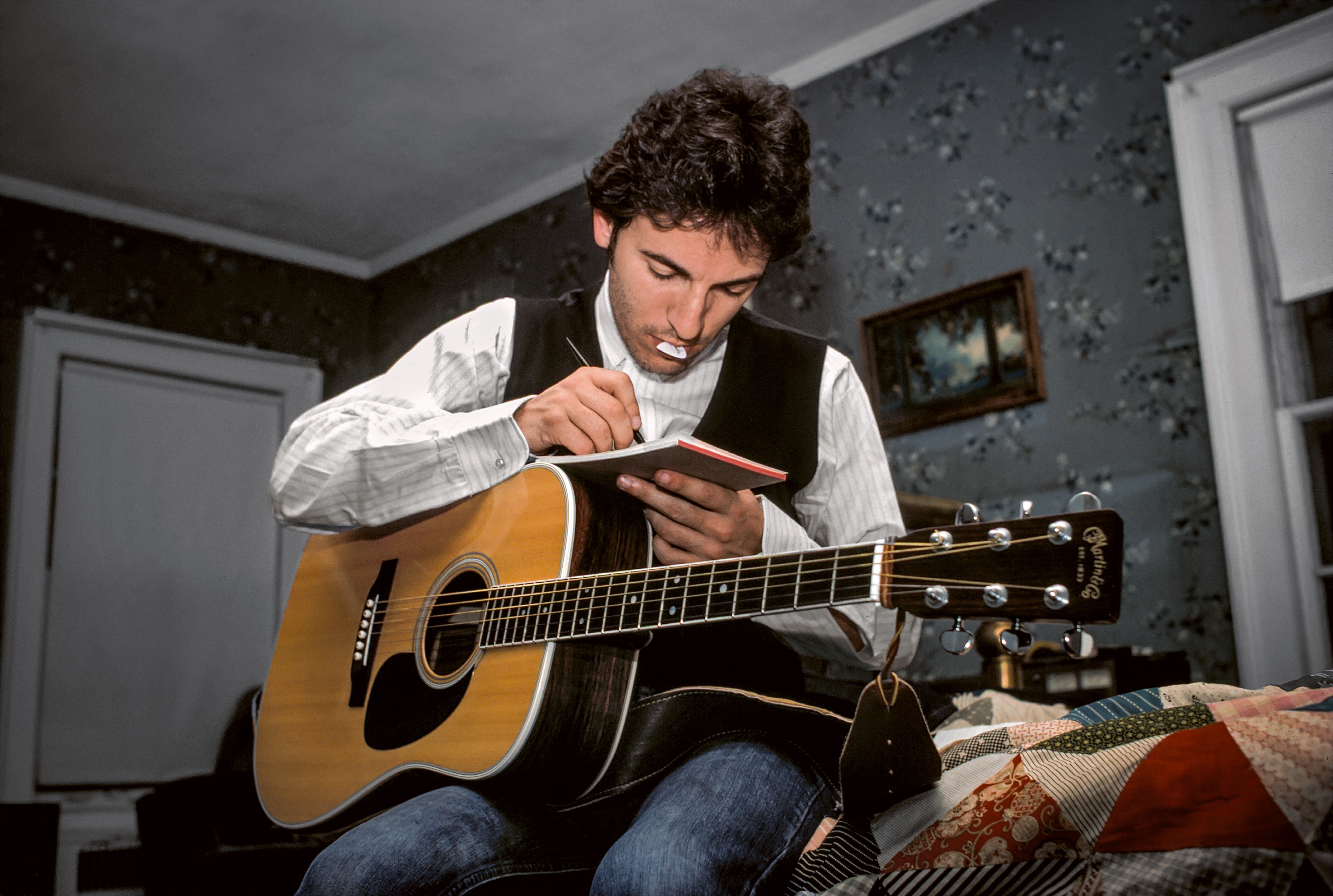
You obviously were lucky enough to get to attend and photograph many, many Bruce Springsteen shows. Is there one that stands out to you above all the rest that’s the most memorable or a personal favorite?
Well, we started the tour and it was very small, and in the middle of the country there were hardly any people in the audience. In one place, there was like three people. Bruce was very well-known on the East and West Coast, but the middle of the country never heard of Bruce Springsteen. And he won them over with really his amazing ability to be a raconteur, a speaker, a talker, someone who told stories with the songs. He talked to them before many of the songs telling the story, a story about his father or something. And he gave them everything he had, the whole band did for the entire show, whether it was sold out or whether there was hardly anybody there.
And I think it’s his work ethic that made the band have such a strong work ethic and then made audiences really just fall in love with him. So by the time we got to Madison Square Garden, which was the end of the show, and I mean, there you’re talking like 20,000 people, and he’d not ever played at Madison Square Garden. Remember also he didn’t have an opening act, Bruce did the whole thing. And so the Garden sticks out for me in particular because his family was there, and because I knew for him, he was afraid of Madison Square Garden, of playing a place that big. And he was generally not nervous before a show, and he really was before that one. And he went out there, faced his fear and loved it. Because the feedback from the audience was 20 times greater than if it was an audience of 1,000. So, yeah, that to me was a big turning point and an important moment.
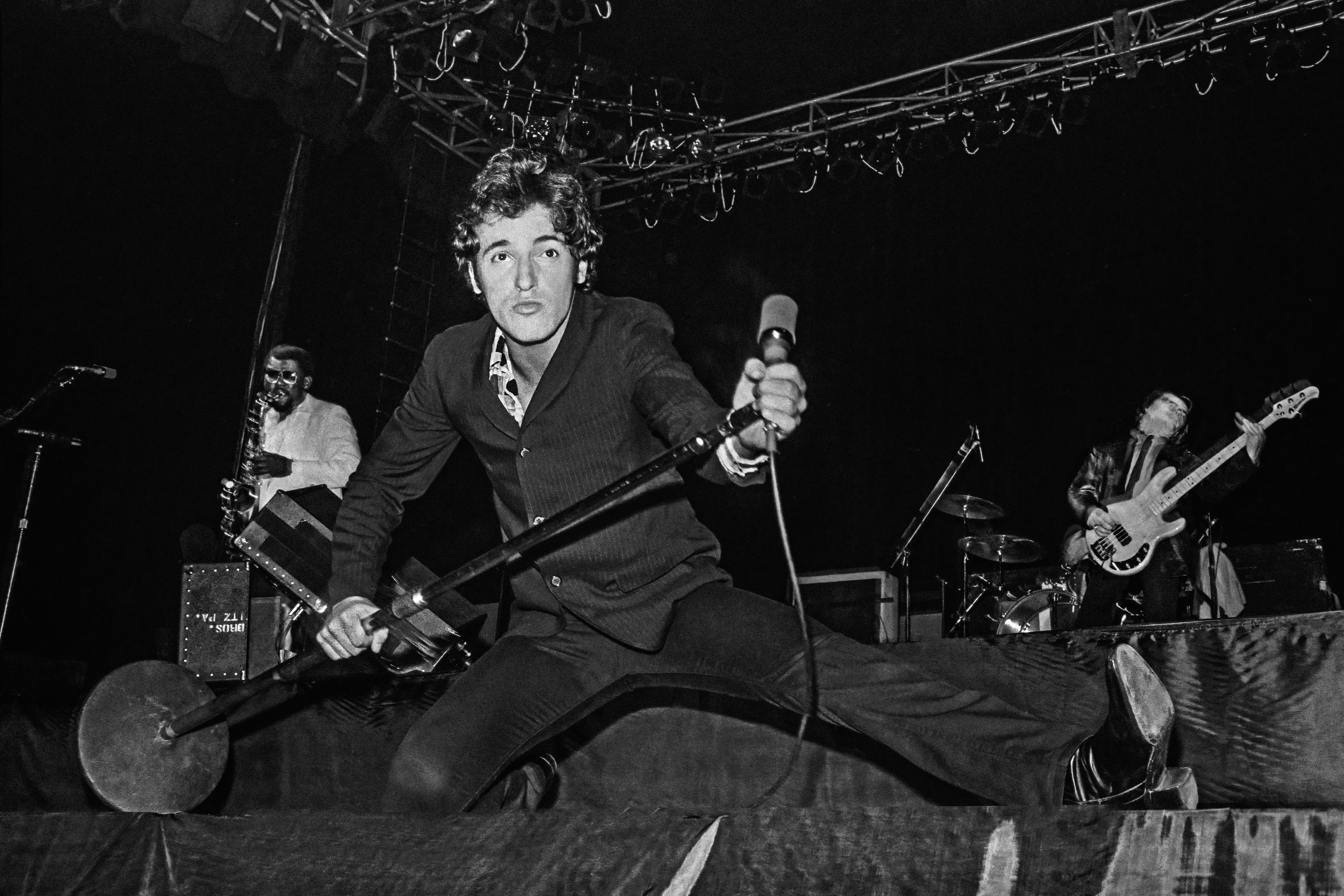
In some of these photos in the book, we see that Bruce’s hand is bandaged because he had hit a wall in frustration during the sessions. What do you think was at sort of the root of that frustration for him?
That he hears things in his head and he’s trying to get other people to make them happen. And he didn’t really have the kind of musical vocabulary that, let’s say, someone like Paul Simon did. ‘Cause Paul Simon, I think, is also an artist that hears it a certain way in his head and just pushes musicians, engineers, anything that has to do with sound recording, mastering, he pushes it to a point until he can get what it is he hears in his head. But Paul has a better handle on how to verbalize it. And I don’t think at that point in time Bruce did, and it’s been well-documented by Jimmy Iovine, who was an engineer on the record to other people, that those sessions were really grueling.
Going back to the live performance, obviously Bruce and the E Street Band are all such dynamic performers, and no two shows were exactly alike. How did that spontaneity impact your own approach to shooting those performances?
Oh, I like that. I wanna be surprised. I don’t like today’s world where lights are programmed to go to a certain area of the stage. You have to stay kind of within your mark. I mean, the only reason I liked shooting concerts was because I felt it was like what it would be like being in a war zone. You never know what’s gonna happen, and it teaches you to be really fast. Unfortunately, the lighting is not like lighting today, you know. We didn’t have as much light, and the cameras didn’t work. The film speed was not high enough. So you really kind of had to have your technical abilities together. So, I like those challenges. It makes it more interesting for me. I don’t really wanna know that on the second-to-last song, a fire bomb is gonna go off.

Having watched this album come together from the beginning to the end — the rehearsals, the sessions and then watching it performed live on tour — was there anything that struck you or surprised you about the way that it turned out?
Well, it’s such a different thing. The live experience, they’re being fed energy by the audience. And you have to move forward. You’re not doing another take of it, you know? You’re not trying to perfect anything. I think that was a time for the band to enjoy replicating as closely as they could what was on the record, but also being ready to perform songs that were not on Darkness on the Edge of Town, you know? I mean, Bruce could throw in, let’s do a “Quarter to Three,” you know? And just like I enjoyed not knowing what would happen. I think it kept it fresh for them that Bruce could call out a different song. There was no set set list. There was a set list, but it wasn’t set.
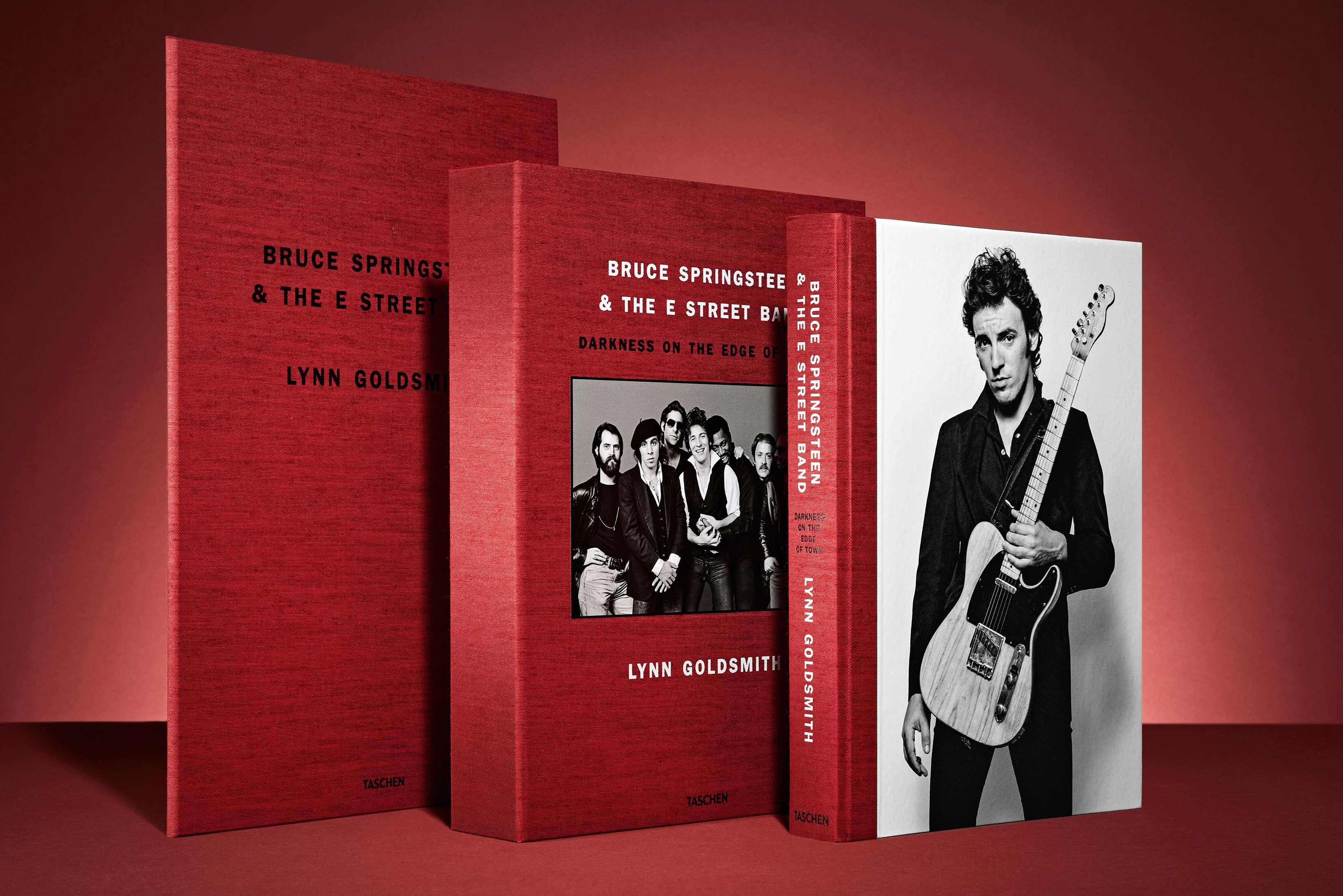
Separate from Springsteen, I also wanted to ask: I know you recently won your Supreme Court case against the Warhol estate, which I think is going be a landmark case for photographers. What’s your reaction to finally winning that case?
Well, if I didn’t win it, I would have nothing. First of all, they sued me, which means you don’t get a lawyer to work on contingency, you have to pay your legal fees. And their threat was that unless I gave them my copyright and took what was a very small amount of money, they were gonna continue to sue me all the way to the Supreme Court. And the millions that would cost me, in addition to the fact that they were suing me as well for their legal fees. So if they had won, I’d have nothing. I really thought when I decided that I was not gonna be bullied and that it was time for the fair use aspect of the copyright law, particularly that which refers to what is transformative, be tightened up because there had been previous court rulings that really made it very difficult for photographers particularly, to claim rights. Anyway, the GoFundMe is still going on — happy if you write about it, happy if you donate $10. I thought if every professional photographer in America alone, there’s 190,000 listed professional photographers, I thought if each one gave 10 bucks… But it did cost millions, and thank god I won because they could have taken my house and everything. But the donations really only came to about $60,000.
So, they trickle in. I got $10 from somebody the other day. [laughs] And, no, I feel like it’s not just photographers. It also applies to all the other art forms, and the biggest donations were actually made by screenplay writers and musicians because it affects them as well. It affects all of the arts, not just photographers, but photographers are really subject to it because it’s so easy to just pull someone’s picture off the internet, draw a red circle around it and call it yours. Yeah.
This article appeared in an InsideHook newsletter. Sign up for free to get more on travel, wellness, style, drinking, and culture.
